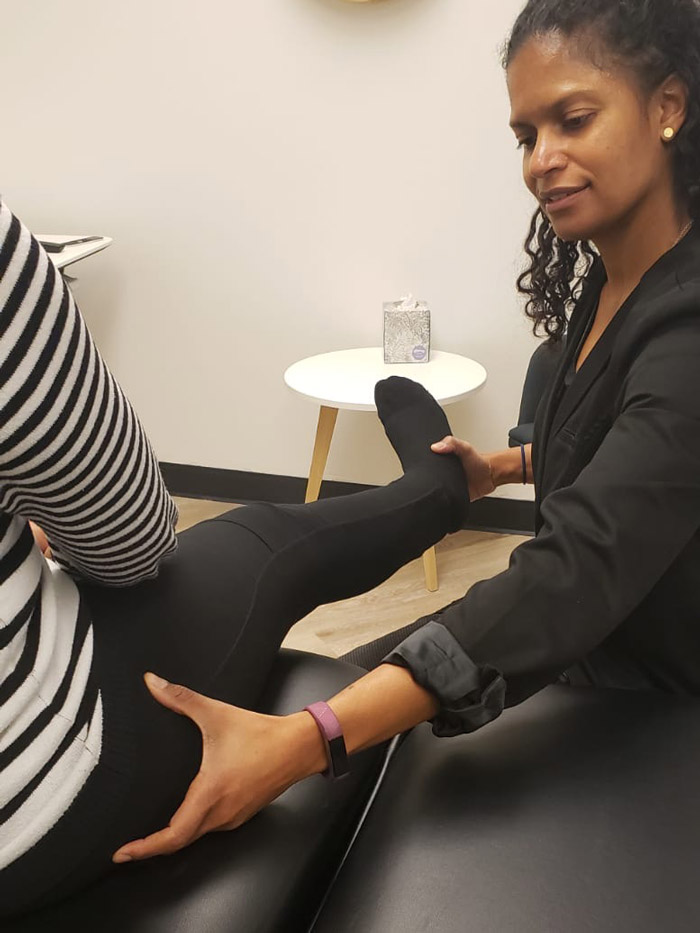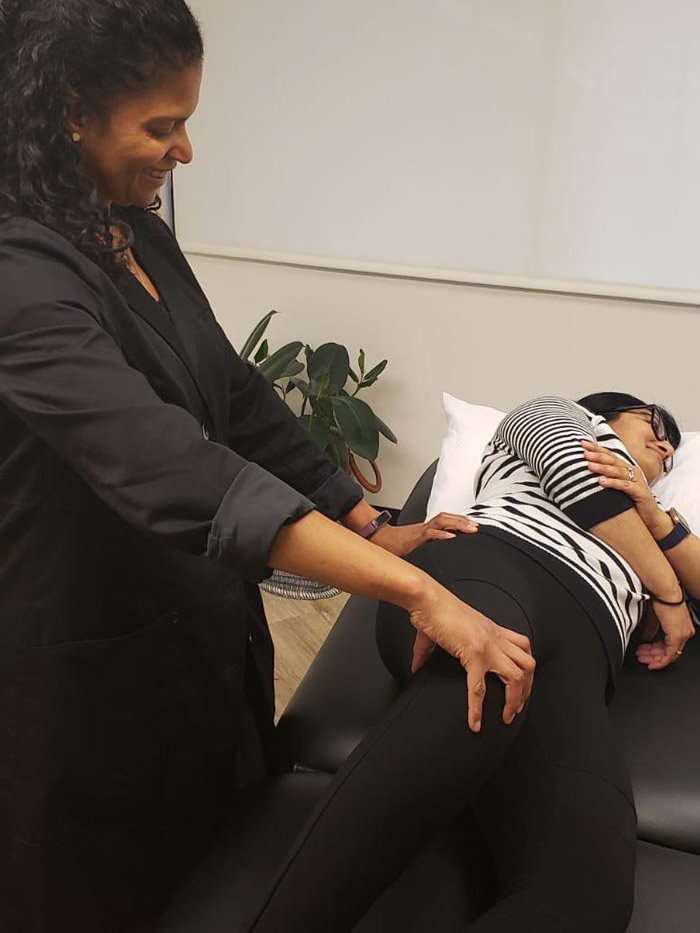For clinicians
Deep gluteal syndrome is a description for pain in the buttock due to entrapment of the sciatic nerve. In the past, most pain in this area was attributed to piriformis syndrome. However, the sciatic nerve can be entrapped by a number of different structures that are not the piriformis muscle, including gluteal and hamstring muscles, fibrous bands containing blood vessels, gemelli-obdurator internus complex, vascular abnormalities, and space-occupying lesions.
The deep gluteal space is a unique anatomic area because the sciatic nerve enters through the sciatic notch with moves significantly with hip motion.
Differential Diagnosis:
- Lumbar spine pathology
- Pudendal Nerve Entrapment
- Ischiofemoral Impingement
- Greater Trochanter Ischial Impingement
- Ischial Tunnel Syndrome
Key history components
- History of trauma
- Pain with sitting
- Aching, burning or cramping in the buttock or posterior thigh
- Radicular pain of lower back or hip
- Paresthesias
- Focused uro and gyn history
To review the full exam of the hip, watch this video.
Specific physical exam maneuvers for deep gluteal syndrome are:

Seated piriformis stretch test: passive flexion, adduction with internal rotation while palpating the deep gluteal region

Active piriformis test: active abduction, external rotation while monitoring the piriformis.
Treatment
- Therapeutic exercises
- Image guided intra-articular and extra-articular injections using local anesthetic and steroid can provide insight into the diagnosis while having a therapeutic benefit.
- If the above fails, surgical decompression of the sciatic nerve
For patients
Deep gluteal syndrome is a description for pain in the buttock due to a pinch of the sciatic nerve.
In the past, most pain in this area was attributed to piriformis syndrome. However, the sciatic nerve can be entrapped by a number of different structures that are not the piriformis muscle, including other muscles, fibrous bands, blood vessels, etc.
The deep gluteal space is a unique anatomic area because the sciatic nerve enters through the sciatic notch with moves significantly with hip motion.
Key symptoms
- History of trauma/fall
- Pain with sitting
- Aching, burning or cramping in the buttock or thigh
- Pain radiating from the back or hip
- Numbness and tingling
Diagnosis
- Detailed exam of the hip
- Specific maneuvers that reproduce pain
- Imaging as needed (xray, ultrasound, MRI), but not necessary
Treatment Options
- Therapeutic exercises
- Injections using anesthetic and steroid can provide relief and help with the diagnosis
- Extracorporeal Pulse Activation Technology (EPAT)
- If the above fails, surgical decompression of the sciatic nerve
Reference: “Deep gluteal syndrome” Hal David Martin, Manoj Reddy and Juan Gomez-Hoyos Journal of Hip Preservation Surgery, 2015, Vol. 2, No. 2, pp. 99–107

